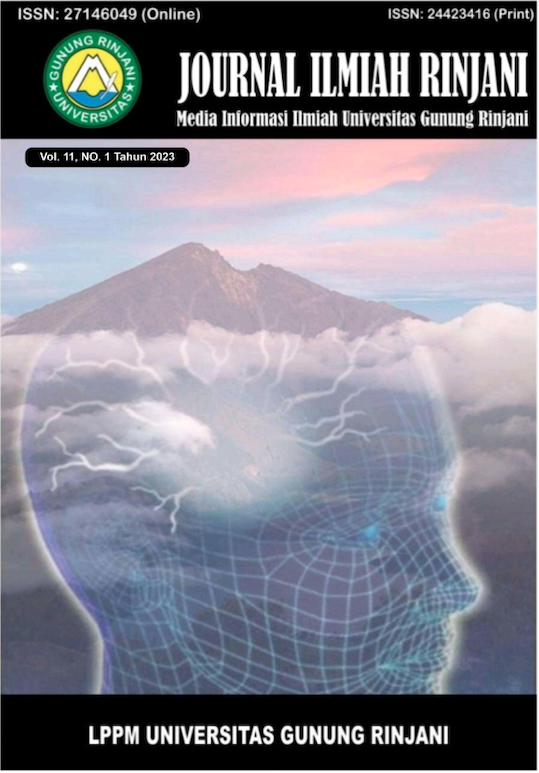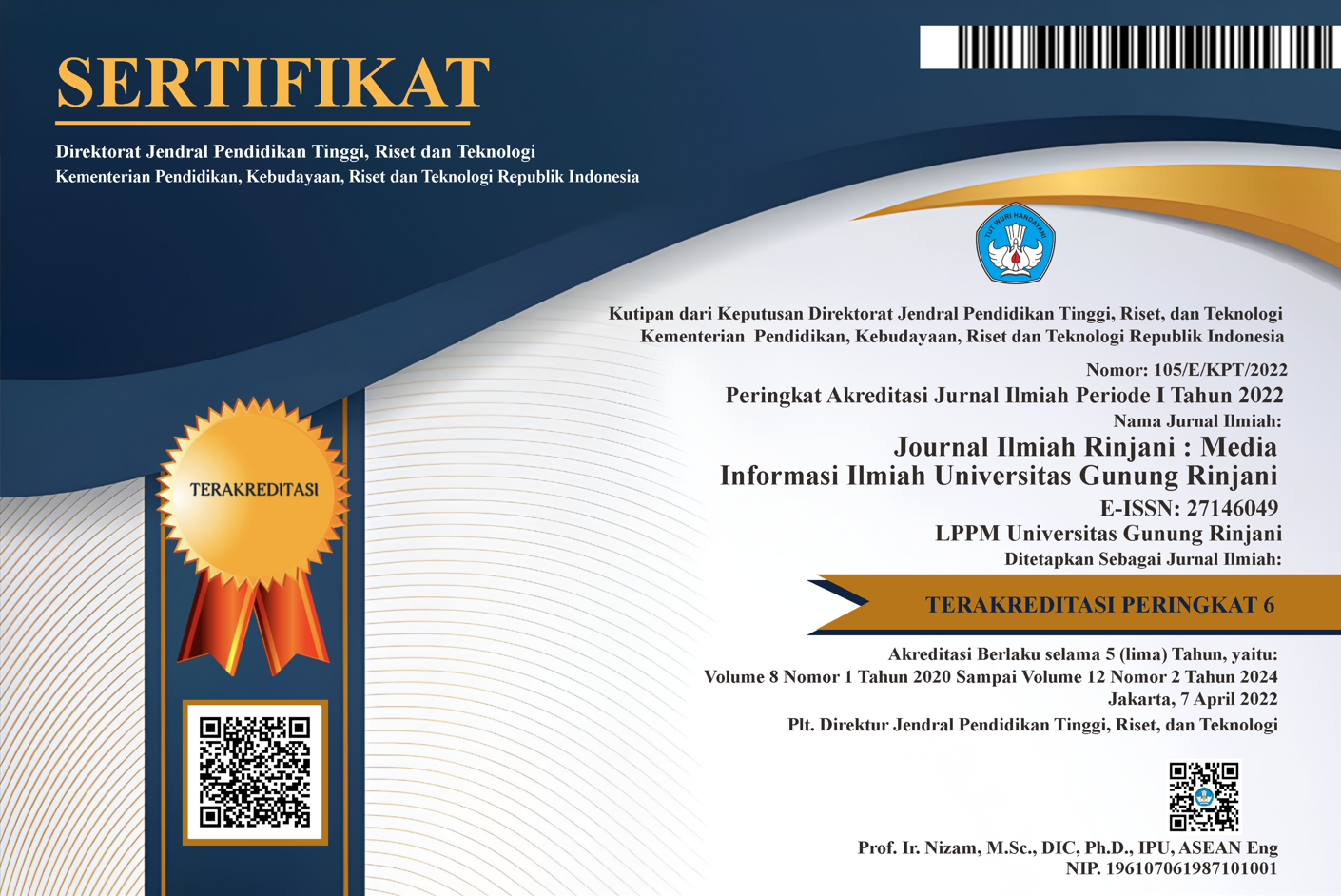ANALISIS PENILAIAN KINERJA KEUANGAN DAERAH PADA PEMERINTAH DAERAH PROVINSI NUSA TENGGARA BARAT
Keywords:
Budget, Assessment, Financial Performance, Financial Statements, RatioAbstract
Government financial statements are an important component of creating public sector accountability. The purpose of financial statements is to provide information used to evaluate managerial and organizational performance. To evaluate government financial performance, ratio analysis is used. This study aims 1) to analyze the assessment of regional financial performance related to regional financial capability, regional financial capability, and regional dependence on the center, 2) to analyze the ratio of revenue and expenditure growth, 3) to analyze the effectiveness of revenue and expenditure efficiency. This research method is a qualitative method, the data used is secondary data in the form of the NTB Regional Government Budget Realization Report for the period 2020-2023, then the data will be analyzed using financial ratio analysis. The results showed that the ratio of financial capability and independence has increased, and the dependency ratio has decreased, which means that the local government is able to carry out the authority of decentralization. The revenue growth ratio in 2020 and 2022 is negative, meaning that there is no increase in revenue, while in 2021 and 2023 it is positive, meaning that it has increased, but the average revenue effectiveness ratio is in the good enough category. In the ratio of expenditure growth ratio> 40% inefficient category. This is because government spending increases every year along with the increase in development and community services.
Downloads
References
Ambya. (2023). Ekonomi Keuangan Daerah. AURA Publishing.
Anjani, Eka Sintala Dewi, Akram, Handajani, L. (2015). Hubungan PAD, Belanja Modal dan Kinerja Keuangan Pemerintah Daerah Di Nusa Tenggara Barat. Jurnal Ilmiah Universitas Trunojoyo Madura, 1. https://doi.org/10.16285/j.rsm.2007.10.006
Asahdi, Hamzah, A., & Musnadi, S. (2015). Faktor-Faktor Yang Mempengaruhi Pengeluaran Pemerintah Indonesia. Jurnal Ilmu Ekonomi Pasca Sarjana Universitas Syiah Kuala, 9(2), 65.https://jurnal.usk.ac.id/MIE/article/view/4742/4091
Badan Pusat Statistik Provinsi Nusa Tenggara Barat. (2024). Statistik Daerah Provinsi Nusa Tenggara Barat 2024. 14.
Halim, A. (2007). Manajemen Keuangan Daerah Edisi Revisi. UPP AMP YKPN.
Irnawati. (2017). Analisis Kinerja Keuangan Daerah Pada Kota Makasar. 4, 403–416.
Ambya. (2023). Ekonomi Keuangan Daerah. AURA Publishing.
Anjani, Eka Sintala Dewi, Akram, Handajani, L. (2015). Hubungan PAD, Belanja Modal dan Kinerja Keuangan Pemerintah Daerah Di Nusa Tenggara Barat. Jurnal Ilmiah Universitas Trunojoyo Madura, 1. https://doi.org/10.16285/j.rsm.2007.10.006
Asahdi, Hamzah, A., & Musnadi, S. (2015). Faktor-Faktor Yang Mempengaruhi Pengeluaran Pemerintah Indonesia. Jurnal Ilmu Ekonomi Pasca Sarjana Universitas Syiah Kuala, 9(2), 65.https://jurnal.usk.ac.id/MIE/article/view/4742/4091
Badan Pusat Statistik Provinsi Nusa Tenggara Barat. (2024). Statistik Daerah Provinsi Nusa Tenggara Barat 2024. 14.
Halim, A. (2007). Manajemen Keuangan Daerah Edisi Revisi. UPP AMP YKPN.
Irnawati. (2017). Analisis Kinerja Keuangan Daerah Pada Kota Makasar. 4, 403–416. http://etd.repository.ugm.ac.id/home/detail_pencarian/113738
Kementerian Sekretariat Negara Republik Indonesia. (2023). Keputusan Presiden Nomor 17 Tahun 2023 tentang Penetapan Berakhirnya Status Pandemi Corona Virus Disease 2019 (COVID-19) di Indonesia. Jakarta: Pemerintah Pusat, 167292, 1–3.
Mahmudi. (2010). Manajemen Keuangan Daerah. Erlangga.
Mardiasmo. (2009). Akuntansi Sektor Publik. ANDI.
Nurabiah, N. (2018). Analisis Perbandingan Kinerja Keuangan Pemerintah Daerah yang Memperoleh Opini Wajar Tanpa Pengecualian (WTP) di Provinsi Nusa Tenggara Barat. Jurnal Aplikasi Akuntansi, 3(1), 067–100. https://doi.org/10.29303/jaa.v3i1.36
Patarai, D. M. I. (2018). Kinerja Keuangan Daerah.pdf (pp. 1–324).
Pemerintah Provinsi NTB. (2022). Laporan Realisasi Anggaran NTB Tahun Anggaran 2020-2021.
Pemerintah Provinsi NTB. (2023). Laporan APBD Provinsi NTB Tahun 2022.
Pemerintah Provinsi NTB. (2024). Laporan Realisasi Anggaran NTB Tahun Anggaran 2023.
Putra, H. C., Hukum, P. I., Islam, U., Sunan, N., & Djati, G. (2022). Konsep Pengelolaan Keuangan Negara Dan Barang-Barang Publik. Jurnal Administrasi Publik Dan Kebijakan (JAPK), 2(2), 1–17. https://doi.org/10.30596/japk.v2i2.11016
Analisis Penilaian Kinerja Keuangan Pemerintah Daerah. Jurnal Riset Akuntansi Dan Bisnis Indonesia, 1(1), 75–94. https://doi.org/10.32477/jrabi.v1i1.325
Undang-Undang Republik Indonesia Nomor 32 Tahun 2004 Tentang Pemerintahan Daerah, Pub. L. No. 125 (2004).
Sekretaris Negara Republik Indonesia. (2004). Undang-Undang Republik Indonesia Nomor 33 Tahun 2004 Tentang Perimbangan Keuangan Antara Pemerintah Pusat dan Pemerintah Daerah.












